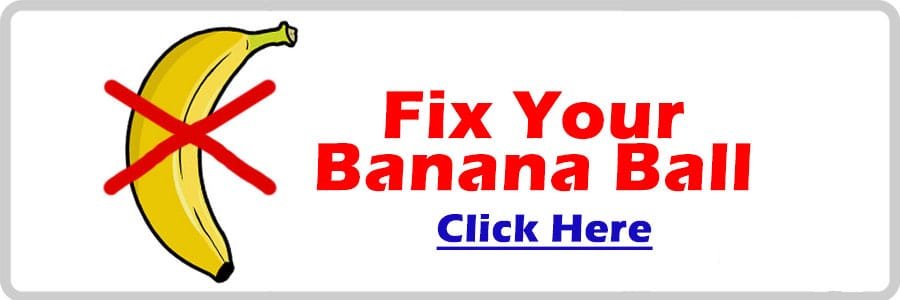Have you ever found yourself frustrated on the golf course, watching your ball take a hard right turn every time you swing? You’re not alone! The slice is a common issue among golfers of all skill levels. Luckily, there are some effective swing changes you can make that may help reduce your slice in just one session. Let’s go through some key adjustments you can implement right away.
Understanding the Slice
Before you can make any changes to your swing, it’s essential to understand what a slice is and why it occurs.
What is a Slice?
A slice occurs when the ball curves dramatically to the right (for right-handed golfers) or to the left (for left-handed golfers) as it travels through the air. This happens because of the way the clubface makes contact with the ball. When the clubface is open relative to the swing path at impact, it causes the ball to spin and veer off course.
Why Do You Slice?
There are several reasons why you might be slicing the ball. These can range from grip issues and stance problems to swing path discrepancies. By addressing these factors, you can make your swing more consistent.
Key Swing Changes to Reduce Your Slice
Now that you have a basic understanding of what a slice is let’s discuss specific swing changes that could help you reduce or even eliminate it in just one session.
1. Grip Adjustment
A common reason for slicing is an improper grip.
How to Adjust Your Grip
- Check Your Hand Position: Your grip should be neutral. For right-handed golfers, you want to see two to three knuckles on your left hand. This indicates that your grip isn’t too weak, which is a common cause of a slice.
- Grip Pressure: Hold the club with a relaxed grip. Holding too tight can limit your wrist movement and lead to an open clubface at impact.
Making these small changes to your grip can make a significant difference in your ball flight.
2. Stance and Alignment
Your stance can greatly affect your swing path and, subsequently, whether you slice the ball.
How to Align Your Body
- Foot Position: Ensure your feet are shoulder-width apart. This offers a stable base for your swing.
- Aim Your Shoulders: Align your shoulders parallel to your target line. If your shoulders are aimed too far to the left (for right-handers), it can cause an outside-in swing path that often leads to a slice.
A solid stance and proper alignment create the foundation for a more consistent swing.
3. Swing Path Adjustment
Changing your swing path is critical in reducing your slice.
Techniques for Swing Path Modification
- In-to-Out Path: Concentrate on swinging your club from the inside to the outside on your downswing. Imagine you’re trying to “slot” the club behind your body on the way down.
- Use an Alignment Stick: Place an alignment stick or club on the ground just inside your back foot. This visual aid will help you maintain the correct swing path.
Focusing on your swing path changes can prevent the face from opening at impact.
4. Clubface Position
The position of the clubface at impact can make or break your golf swing.
Achieving Correct Clubface Control
- Check Your Clubface: Make sure your clubface is square at impact. You can practice this through drills that focus on clubface awareness.
- Wrist Position: Pay attention to your wrist angle. A slightly closed wrist angle can help keep the clubface from opening too much at impact.
Controlling the clubface through proper positioning can greatly reduce your slice.
5. Practice Drills
Incorporating specific drills into your practice routine can help you internalize these changes more quickly.
Suggested Drills
| Drill Name | Description | Purpose |
|---|---|---|
| The Inside-Out Drill | Place an object (like a headcover) outside your target line to encourage an in-to-out swing path. | Enhances swing path awareness. |
| The Wall Drill | Stand next to a wall with your swing path planned. This helps prevent an outside-in trajectory. | Promotes correct club path and angle. |
| The Grip Pressure Drill | Swing slowly while focusing on grip pressure to find a balance between control and relaxation. | Develops a consistent grip feel. |
Trying out these drills during your practice sessions can solidify these swing changes.
6. Equipment Check
Sometimes, the equipment you’re using can contribute to your slice.
Ensure Your Clubs Are the Right Fit
- Club Length: Make sure the clubs you’re using are fit for your height and swing style. A club that is too long or too short can lead to inconsistencies in your swing.
- Loft and Lie Settings: Adjusting the loft and lie angles can also assist in reducing your slice. Consult a professional to check and make any necessary adjustments.
Your clubs should feel comfortable, and the right specifications can help you achieve better control.
7. Mental Adjustment
Alongside physical changes, your mental approach to the game can influence your performance.
Focus on Positives
- Visualize a Straight Shot: Before you swing, visualize where you want the ball to go. This visualization can create a level of focus that helps reduce tension during your swing.
- Stay Relaxed and Present: Practicing mindfulness on the course helps you stay in the moment rather than getting caught up in worries about slicing or past swings.
Having a strong mental game is integral to performing well on the course.
8. Analyze Your Swing
Using technology to analyze your swing can provide insights that help you make better adjustments.
Why Video Analysis Helps
- Record Your Swings: Use your phone or a camera to record your swing, then playback to identify any flaws.
- Seek Professional Advice: Sometimes, getting an experienced golf pro to take a look can provide external feedback you might not see yourself.
Utilizing tools for analysis can offer a clearer picture of what needs improvement.
9. Regular Practice Routine
Implementing your changes won’t help unless you practice regularly.
Building a Consistent Routine
- Frequency: Try to practice at least a couple of times a week, focusing on specific swing changes each time.
- Structured Goals: Set specific goals for each practice session. Perhaps one day, focus solely on your grip, while the next might center on clubface control.
Establishing a consistent practice schedule reinforces good habits over time.
10. Patience and Progress
It’s crucial to remember that change won’t happen overnight.
Understanding the Learning Curve
- Give Yourself Time: Making swing changes takes time, so be patient with yourself. You may not see immediate results, but with practice, improvements will come.
- Celebrate Small Wins: Recognize the progress you make along the way, even if it’s just hitting a few straight shots or making solid contact.
Building a more reliable swing is a journey, and every step forward is worth celebrating.
Conclusion
While it can be frustrating to struggle with a slice, implementing some simple changes to your grip, stance, swing path, and more can lead to significant improvements. Remember to be patient and practice regularly. By focusing on the areas we discussed and using the drills provided, you may find yourself enjoying a more consistent golf game.
Wouldn’t it be great to step up to the tee and see straighter shots? You have the tools now to help make that happen! Happy swinging!






